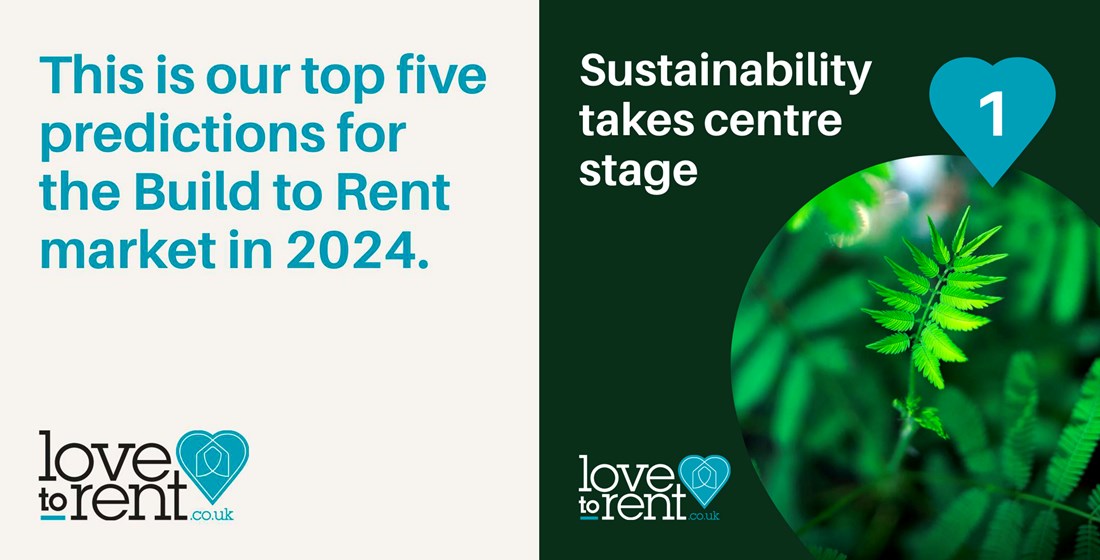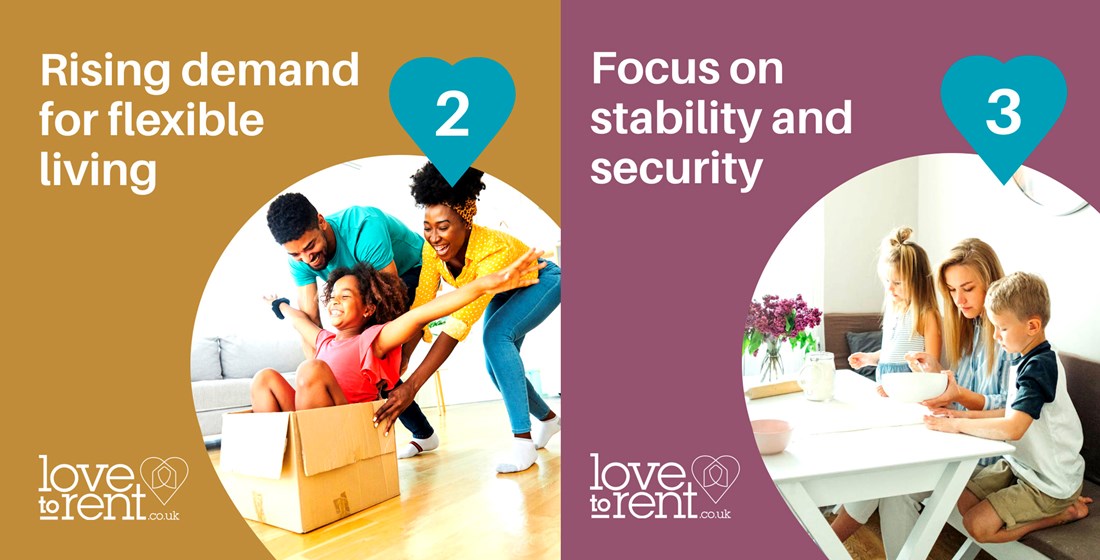What to expect from Build to Rent in 2024
- 16th Jan 24
It’s official. Build to Rent is the fastest growing sub-sector of the British property market. Over the last decade, it has surged in popularity and shows no signs of slowing down. In fact, the supply of Build to Rent units is increasing at an impressive rate of 50% annually, which means that 2024 is set to be the most significant year on record.
According to data from Savills, in the third quarter of 2023, 200 local authorities are gearing up to deliver over 112,500 additional Build to Rent homes. Notably, the single-family housing (SFH) segment, a burgeoning area within the sector, now constitutes 28,000 units, accounting for 11% of all Build to Rent homes.
At the start of this new year, we look at the anticipated trends and developments in the market and how it benefits the customer.
Sustainability takes centre stage
A recent survey conducted by MRI reveals that the rental preferences of Gen Z and Millennials include sustainability high on the agenda. Almost half of the surveyed tenants identified eco-friendly features as a crucial factor influencing their decision to rent a property. When you throw in the recent surge in energy prices, it is no surprise that customers are demanding to know what landlords are doing. Build-to-Rent projects in 2024 are anticipated to emphasise eco-friendly designs, energy-efficient systems, and the use of sustainable materials. Green spaces, bike-friendly infrastructure, recycling schemes and eco-conscious amenities will be integral to the appeal of these homes. In a bid to remain competitive, we expect Build to Rent operators to focus even more on innovation to highlight their green credentials.
Rising demand for flexible living
As lifestyles continue to evolve and people demand more flexibility in their working life, individuals are increasingly valuing the convenience and flexibility offered by Build to Rent. The concept of renting as a lifestyle choice, rather than a temporary solution, is becoming more prevalent.
Greater demand
With the rise of the cost of living combined with less affordable mortgages, it is more difficult for first time buyers to enter the market. More tenants in the rental sector will create an even greater supply and demand imbalance, leading to more individuals looking to Build to Rent as an alternative to the private rental sector.
Stability and security
With the property landscape evolving, more people are looking to put down roots in their rental homes. Community-led Build to Rent homes will be favoured because individuals can choose their length of stay, without the worry that their landlord will ask them to move on because they have decided to sell up. These homes are built to be rented through professional management companies, giving customers peace of mind that they can determine the length of their stay.
Technology integration
Build to Rent operators are already way ahead in terms of technological advancements. Smart home features, energy-efficient solutions, and integrated tech amenities are becoming standard offerings. Property management platforms and mobile apps are also widely in use and further enhancements will continue to provide customers with seamless experiences for rent payments, maintenance requests and community engagement.
Community focused design
Community centric design principles are not just aesthetically pleasing, they also recognise the importance of fostering a sense of belonging among residents. Looking into the new year, operators will continue to improve their shared spaces, co-working areas and communal facilities, creating vibrant and socially connected environments.
Diverse offerings
In 2024, the Build-to-Rent market is expected to diversify its offerings to cater to a broader range of demographics. From luxury apartments with premium amenities to more affordable housing options, including family homes and downsizer offerings, developers are recognising the need to address various budgets and lifestyle preferences. In fact, Savills predict that there could be as many as 30,000 Build to Rent single-family rental homes in the UK by 2027, increasing to 70,000 by 2032.
Health and wellness
With the recognition that people are renting for lifestyle choices, comes the inclusion of amenities that provide a more holistic living experience. In 2024, Build to Rent operators will continue to incorporate features such as fitness centres, wellness studios, and outdoor spaces to promote a healthier lifestyle for residents.
Start your journey for a new home and lifestyle here






